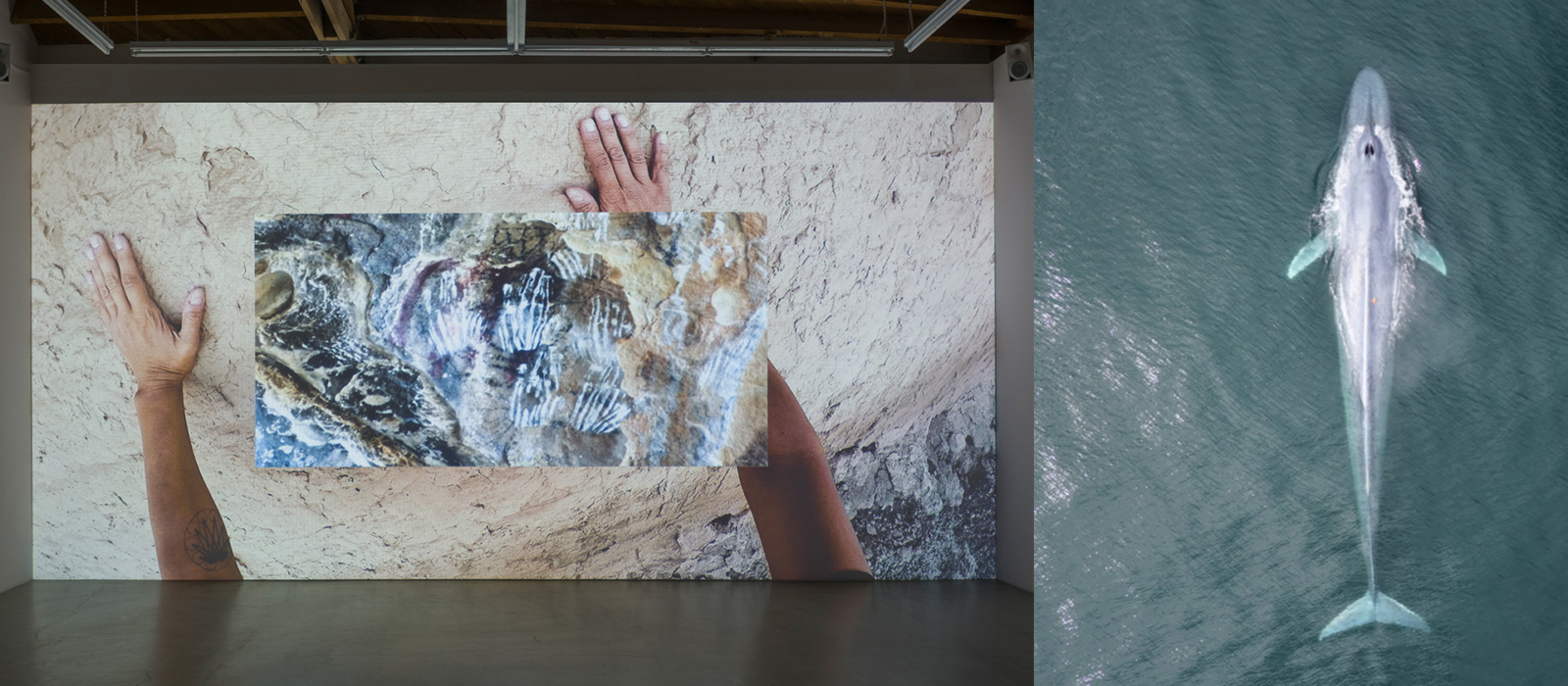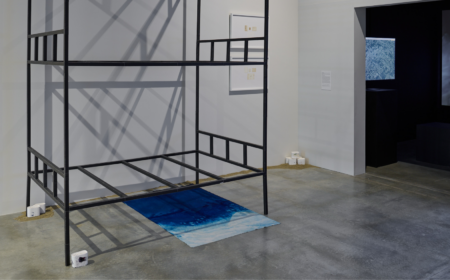January 24, 2024
By Gaby Messino
“It falls on [the scientists’] side of the fence to figure out meaningful ways to show how art impacts our science,” says Ari Friedlaender, an ocean science professor at UC Santa Cruz. He and Rachel Nelson, the director of the Institute of the Arts and Sciences (IAS), have teamed up to create an interdisciplinary project that shows the effects of climate change in California, especially in regards to marine life through both art and science.
The two met after Friedlaender collaborated with multimedia artist Yolande Harris, and Nelson invited them to speak. “I was really fascinated both by their processes of collaboration and the work that they were doing,” says Nelson, “I was also struck by the openness that Ari had to working with artists and how he was thinking about the roles art can play in communicating science research.” On meeting Nelson, Friedlaender describes being “shocked” to find out IAS existed: “as soon as I talked to Rachel, it was very clear to me that we were very much aligned in the ideas that we had.”
Their new project, An Aesthetic of Resilience, is a multi-year initiative that will display research, artworks, and exhibitions starting in Spring 2025. Friedlaender and Nelson are hosting an event on January 24th where they will discuss their collaborative methods and the cultural shifts they are hoping will be a result of this initiative.
An Aesthetic of Resilience will include three research projects in the Friedlaender Lab and art from nationally renowned artists. Collaborating artists include but are not limited to Imani Jacqueline Brown, Christine Howard Sandoval, and Carolina Caycedo. “The artists that we’re working with are incredibly well trained in thinking about the aesthetic approaches to social justice issues,” says Nelson. Friedlaender also mentioned enjoying the conversations with the artists and watching their ideas begin to germinate during their collaboration.
Both Drs. Friedlaender and Nelson emphasize that the art will not be scientific drawings, diagrams, or direct depictions of the research, but that the science and art will be in constant communication with each other. “I’m just grateful to be able to be part of that process,” says Friedlaender. “As scientists, we have an opportunity to have these opinions and these voices impact how we actually do things, we can adjust or modify or direct our science based on the kinds of questions that the artists are going to be asking of us.”
Part of the desire to put art and science in communication, was to broaden the scope and perspective of the research and to emphasize how climate change intersects with forms of social inequity. This is in part to emphasize the people who are often the most impacted by the effects of climate change.
Funding for An Aesthetic of Resilience comes mostly from the California Climate Action Seed Grant. This $2 million in funding comes as part of the $80 million of grant money going to University of California schools. “I want to send an acknowledgement to the folks that are funding these projects, who saw the vision that Rachel and I had for this,” says Friedlaender. “[They understood that] this is a valuable thing to pursue…”
Both are excited for this unique interdisciplinary project that embodies what the IAS was created for. “Some of the solutions to climate change are going to come from scientific research,” says Nelson. “But it is clear that narrative and cultural shifts are also necessary. The arts can be a vital part of leading the cultural changes we need.”
Read more here.
Images: (Left) Christine Howard Sandoval, Niniwas- to belong here, 2022, single channel video with audio, TRT 12:23, Sound design in collaboration with Luz Fleming. Installation for the green shoot that cracks the rock, parrasch heijnen Gallery, LA, 2022. Image courtesy of parrasch heijnen Gallery. (Right) A tagged blue whale surfaces off the coast of California. Photo by Dr. David Johnston, Duke Marine Robotics and Remote Sensing Lab. Collected under appropriate National Marine Fisheries (NMFS) / Marine Mammal Protection Act (MMPA) and Institutional Animal Care and Use Committee (IACUC) permits.




